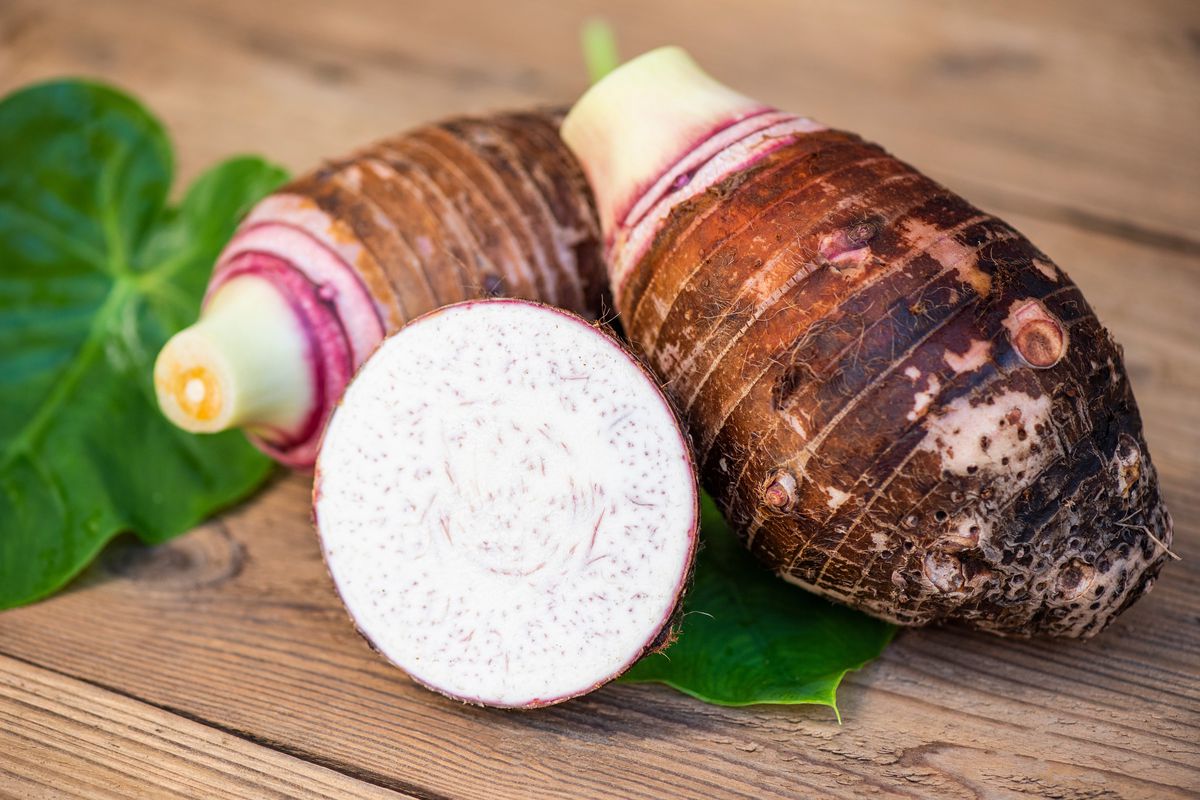The Ultimate Parent’s Guide to Taros: Unleashing the Mystery
Hey there, super-parents! Get ready to dive into the wonderfully whimsical world of taros. From their earthy taste to their versatile uses, we’re peeling back the layers to reveal why this root vegetable should be your new family favorite!
What Are Taros?
Let’s kick things off with a fun fact, shall we? Taros, also known as Colocasia esculenta, are starchy root vegetables that are part of the Araceae family – cousins to the lovely lilies and the dramatic philodendrons. They are often mistaken for their lookalike buddy, the potato, but let me tell you, taros have a personality all their own!
Originating from Southeast Asia and India, these humble tubers have taken the world by storm, becoming a staple in many cultures worldwide. And guess what? They’re super nutritious, making them an excellent choice for growing munchkins with boundless energy!
Nutritional Benefits of Taros
You’re in for a treat because taros are a powerhouse of nutrients. They’ve got fiber, vitamins, minerals, and antioxidants wrapped up in a neat, brown package. Here’s a run-down of what these incredible edibles can offer:
- Fiber: Keeps those little tummies full and digestion on track.
- Vitamins: Taros are rich in vitamin C, E, and some B vitamins for energy and fighting those pesky germs.
- Minerals: They boast a bounty of magnesium, potassium, and iron – essentials for bone health and keeping energy levels high.
- Antioxidants: These help protect your kiddo’s precious cells from damage.
Let’s not forget, taros are a great gluten-free option, making them a super swap for families managing allergies or intolerances.
How to Select and Store Taros
Choosing the perfect taro is like picking the best pumpkin for a jack-o’-lantern – it’s serious business! You want to look for taros that are firm to the touch with a rough, bumpy skin. Stay away from any with soft spots or blemishes. These little guys are sensitive and should be treated with care!
Once you’ve gathered your taro treasures, store them in a cool, dry place. No need to refrigerate; these root veggies like to chill at room temperature. With proper care, they can hang out for up to a couple of weeks waiting to be transformed into a delicious dish!
Family-Friendly Taro Recipes
Ready to tantalize those taste buds? Taros are super versatile and can be enjoyed boiled, baked, steamed, or even fried. Whether it’s taro chips for a crunchy snack or mashed taros for a twist on a classic, the possibilities are endlessly delightful.
Stay tuned for our upcoming sections where we’ll give you the lowdown on scrumptious, kid-approved recipes that’ll have your little ones hopping with excitement for taros. Spoiler alert: They’re going to love the naturally sweet and nutty flavor that comes to life in every dish!

“`html
5 Things Parents Should Know When Preparing Taros
1. Peeling and Cutting Taros
First and foremost, make sure you’re peeling your taros properly. The skin of a taro can be tough and sometimes a little hairy, but fear not! With a sturdy peeler and a little elbow grease, you’ll have those taros bare and ready for cooking. Make sure to slice them into even pieces if you’re going to cook them, so they cook uniformly.
2. Dealing with the Sticky Sap
When you cut into taros, you might notice a sticky sap. Don’t worry; this is totally normal! But it can make for a slippery mess, so best to wear gloves while handling raw taros. This sap also disappears once the taros are cooked, so just keep that in mind while preparing your taro dishes.
3. Cooking Taros Properly
Taros need to be cooked well to be both digestible and delicious. Undercooked taros can leave a scratchy feeling in the throat, which we definitely don’t want for our little ones. Make sure to boil, steam, or bake them until they’re soft and tender to ensure they’re fully cooked.
4. Taro is not just for the Main Course
Think outside the box! Taros can be transformed into delightful desserts. Have you ever heard of taro ice cream or taro bubble tea? These are fun ways to introduce taros to your kiddos in a form they’d never expect.
5. Allergy Awareness
Although taros are naturally gluten-free and generally considered hypoallergenic, it’s always good to be cautious. Some people might have an allergic reaction to taros, especially if they’ve never had them before. Start with small amounts and make sure to watch for any adverse reactions.
“`
This additional section provides essential insights for parents on how to properly prepare taros, ensuring safety, proper cooking techniques, and innovative ways to include taros in your child’s diet. Keep these five tips in mind as you explore the amazing world of taros with your family!
For more great articles please see here. For more information see here
Disclaimer
The articles available via our website provide general information only and we strongly urge readers to exercise caution and conduct their own thorough research and fact-checking. The information presented should not be taken as absolute truth, and, to the maximum extent permitted by law, we will not be held liable for any inaccuracies or errors in the content. It is essential for individuals to independently verify and validate the information before making any decisions or taking any actions based on the articles.




